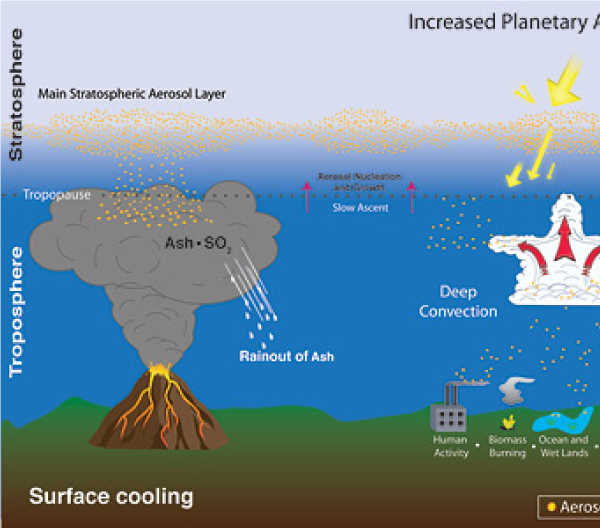Aerosols and Climate

Millions of tons of sulfur dioxide gas from a major volcanic eruption can reach the stratosphere. After converting to sulfuric acid droplets, these aerosols reflect energy coming from the sun, thereby preventing the sun’s rays from heating Earth’s surface. Credit: Kristina Ruhlman/NASA.
Source: TROP ICSU
[30-May-2016] As a High School Chemistry or Environmental Sciences teacher, you can use this set of computer-based tools to teach about aerosols, their sources, and their direct and indirect impact on climate.This lesson plan will help students understand what aerosols are and what are the major sources of atmospheric aerosols. Students will learn the importance of atmospheric aerosols by evaluating their direct and indirect role in affecting climate. They will also learn how aerosol nano particles formation impacts Earth’s climate by cloud seeding and precipitation. Thus, the use of this lesson plan allows you to integrate the teaching of a climate science topic with a core topic in Chemistry or Environmental Sciences. Aerosols and Climate

